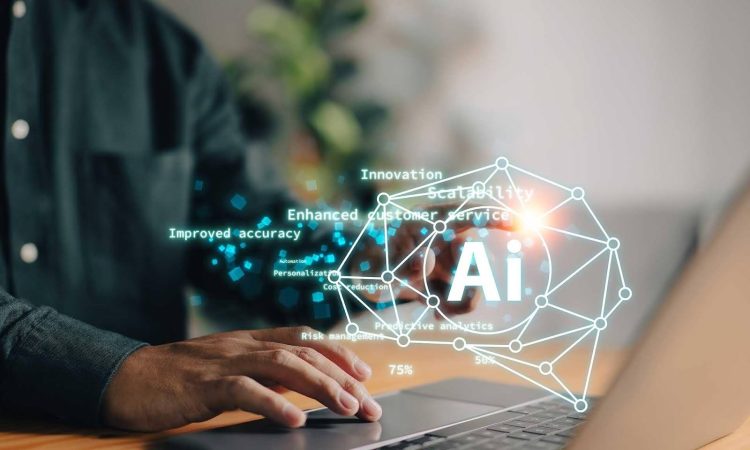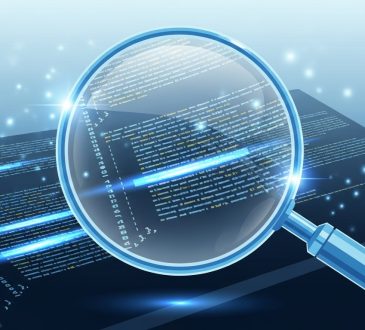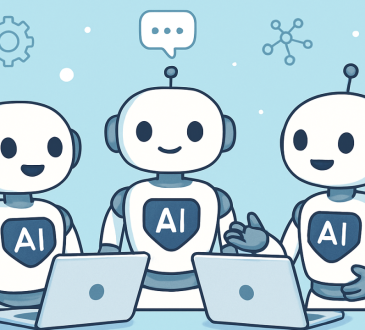Top Emerging Technologies in AI: Latest Developments You Should Know

The world of artificial intelligence (AI) is moving faster than ever, transforming industries, reshaping work processes, and redefining the way humans interact with technology. From breakthroughs in natural language processing to revolutionary applications in healthcare and robotics, AI is no longer a concept of the future—it is actively shaping our present.
For tech enthusiasts, industry professionals, and curious readers alike, staying updated on the latest AI trends is essential. Here’s a closer look at the most significant emerging technologies in AI for 2025 that are changing the game.
1. Generative AI 2.0: Beyond Chatbots
Generative AI, which first captured attention through text and image generation tools, has evolved dramatically. The new wave, often called Generative AI 2.0, goes far beyond simple content creation. Modern generative models can now handle multi-modal outputs, producing text, images, audio, and even video from a single prompt.
This allows creators to produce fully immersive experiences, from AI-generated movies and interactive simulations to personalized learning environments.
Key advancement: Context-aware outputs. Unlike older models that struggled with long-form content or complex tasks, the latest generation uses advanced memory architectures and reinforcement learning to produce content that aligns with user intent. For businesses, this means AI can now create marketing materials, educational content, and creative assets with minimal human oversight.
2. AI-Driven Predictive Analytics in Healthcare
Healthcare is seeing transformative benefits from AI. Predictive analytics, powered by sophisticated machine learning algorithms, is enabling better patient care. Modern AI systems analyze massive datasets—from electronic health records and genomic sequences to wearable device data—to uncover patterns that humans might miss.
2025 development: Real-time monitoring. Wearable devices now feed continuous health data into AI systems, which can detect anomalies instantly. For example:
- Predicting potential cardiac events hours in advance
- Recommending precise insulin adjustments for diabetic patients
These applications are saving lives while reducing hospital admissions and healthcare costs.
3. Neuromorphic Computing: AI That Mimics the Brain
Traditional computing, even with advanced GPUs and TPUs, has limits in energy efficiency and real-time processing. Neuromorphic computing addresses this by mimicking the human brain’s structure and function.
Unlike conventional processors, neuromorphic chips process information in parallel, similar to biological neural networks.
Benefits include:
- Lower energy consumption, ideal for mobile devices, autonomous vehicles, and robotics
- Real-time learning and adaptation without constant cloud connectivity
- Fast decision-making for applications like drone navigation, smart prosthetics, and autonomous robotics
4. Explainable AI (XAI): Demystifying AI Decisions
As AI becomes more powerful, transparency is crucial. Explainable AI, or XAI, helps humans understand how AI makes decisions. Traditional AI models, especially deep neural networks, are often “black boxes,” leaving users unsure about how results are produced. XAI opens that box.
Applications:
- Finance: Explaining why a loan application was approved or denied
- Healthcare: Helping doctors understand AI-recommended treatments
- Law enforcement: Ensuring accountability in AI-driven decisions
XAI increases trust in AI systems while promoting fairness and compliance with regulations.
5. AI in Robotics: Smarter, More Adaptive Machines
Robotics and AI have always been closely linked, but today’s AI-powered robots are smarter and more adaptable than ever. These robots can learn through observation, trial and error, and reinforcement learning, adjusting to new environments and unexpected situations.
Applications:
- Industry: Predicting equipment failures, optimizing workflows, collaborating with human workers
- Service: Assisting in logistics, elderly care, disaster response
- Innovation: Swarm robotics, where multiple AI robots coordinate in real-time, mimicking behaviors seen in nature like flocks of birds or ant colonies
6. AI-Enhanced Cybersecurity: Staying Ahead of Threats
With digital systems growing more interconnected, cybersecurity threats are becoming more complex. AI is now a frontline defense, detecting anomalies in network traffic, predicting attacks, and responding faster than human teams.
Emerging trends:
- Predictive threat modeling
- Autonomous defense systems that adapt proactively
- Combating deepfakes and misinformation through AI-powered content verification
AI-driven security solutions are essential for protecting data, privacy, and digital infrastructure.
7. Quantum AI: Unlocking New Computational Frontiers
The combination of quantum computing and AI—known as Quantum AI—is creating unprecedented computational power. Traditional computers struggle with highly complex problems like molecular simulations or global supply chain optimization. Quantum AI promises exponentially faster solutions.
Potential applications:
- Climate modeling
- Financial forecasting
- Materials science breakthroughs
- Advanced cryptography
While still in early stages, Quantum AI could tackle problems previously thought impossible, opening new horizons for research and innovation.
Conclusion: A Future Shaped by AI
The pace of AI innovation in 2025 is astonishing. Technologies ranging from generative AI and predictive analytics to neuromorphic computing and Quantum AI are interconnected, collectively reshaping industries and everyday life.
From improving healthcare outcomes and enhancing cybersecurity to creating smarter robots and immersive digital experiences, these emerging technologies are just the beginning. The key is to harness AI ethically, transparently, and fairly, ensuring it benefits everyone. The future is clear: AI is not just a tool—it is becoming an integral partner in shaping human progress.




